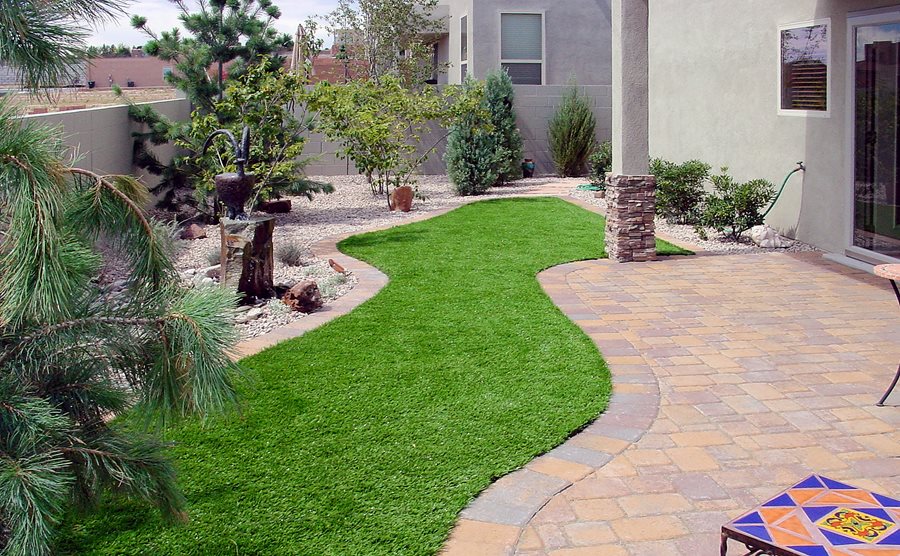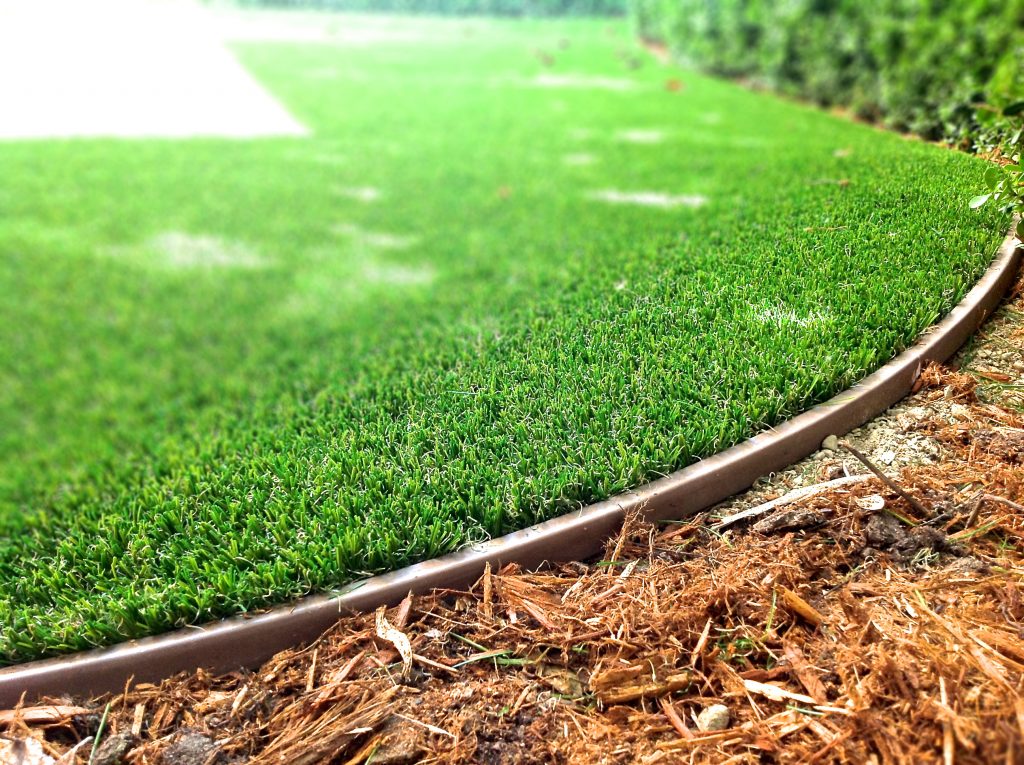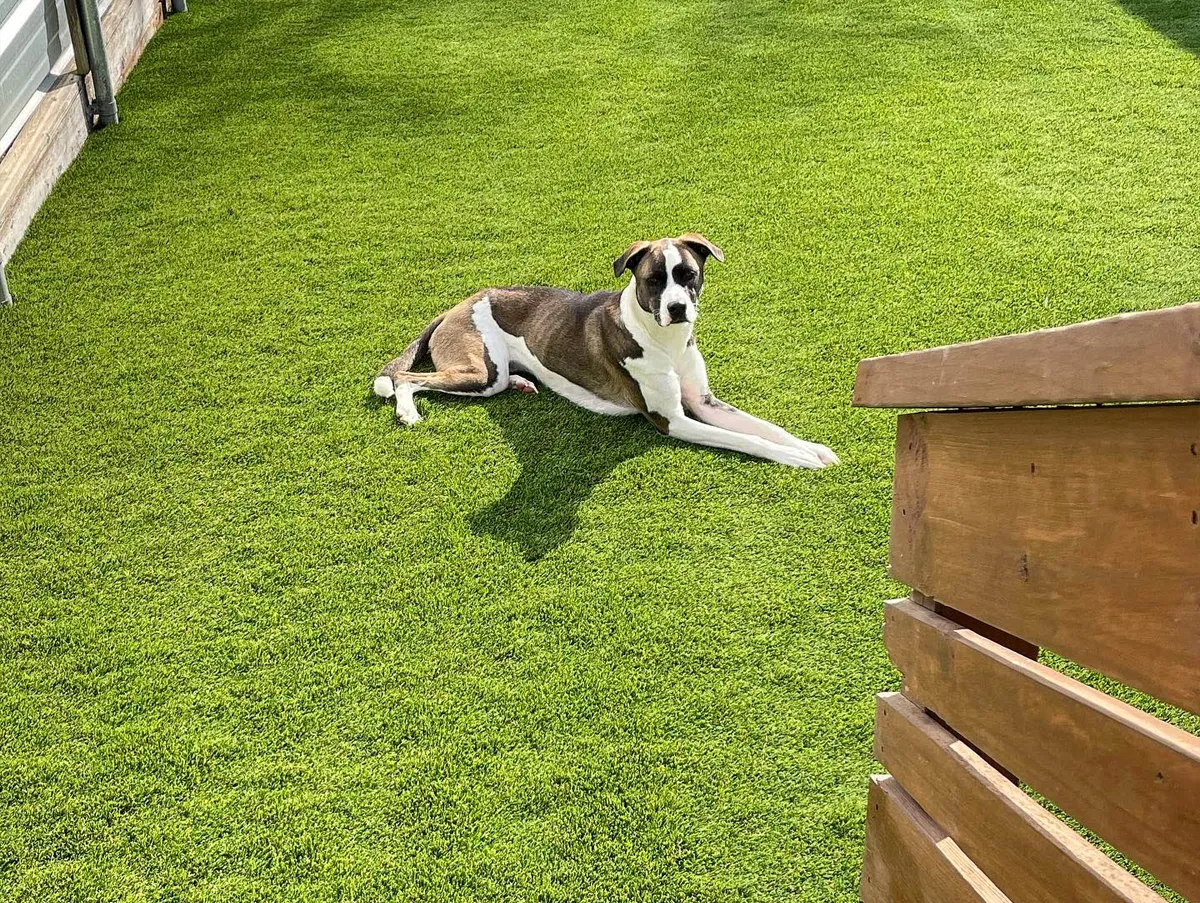See Why Homeowners Prefer Synthetic Grass for Sustainable Landscaping Practices
As property owners progressively focus on sustainability in landscape design, fabricated grass has become a compelling alternative to traditional turf. Its capacity to preserve water, lower upkeep efforts, and minimize ecological impact placements it as a practical option for those seeking eco-friendly options. The visual appeal and convenience of man-made lawn cater to varied style choices. The implications of this shift prolong past simple comfort and appearances, motivating a closer assessment of just how these selections affect broader ecological end results. What stays to be discovered is the full scope of advantages that synthetic grass can use to property owners and the atmosphere alike.
Water Conservation Advantages
One of the most considerable benefits of man-made lawn is its role in water preservation. In contrast, fabricated turf eliminates this need totally, as it does not need irrigation.
In addition, the installment of synthetic grass can add to a more sustainable landscape. House owners can significantly reduce their water expenses, enabling reallocation of resources to other environmental initiatives or household uses. Furthermore, synthetic grass is made to stand up to various climatic problems without the need for additional watering, making it an ideal selection for regions dealing with water scarcity.
The environmental advantages extend beyond instant water financial savings. By minimizing water intake, fabricated grass aids to mitigate the effects of climate modification, protecting crucial ecosystems that are intimidated by excessive water removal. As sustainable landscaping methods get grip, synthetic grass becomes a responsible option for property owners looking for to develop environment-friendly outside areas.
Decreased Upkeep Initiatives
Synthetic grass substantially reduces maintenance initiatives compared to typical lawn yards. With synthetic turf, house owners can get rid of the taxing jobs linked with natural landscape design, such as mowing, feeding, and weeding. This not just conserves important time however likewise reduces physical labor, making yard treatment available for individuals of any ages.
Conventional grass need regular trimming to keep a visually pleasing elevation, whereas man-made turf stays constantly lush without the requirement for reducing. Additionally, home owners no much longer require to apply pesticides or fertilizers, which are typically required to keep natural lawn healthy.
In addition, synthetic grass is resilient and resilient, needing marginal maintenance past periodic brushing and rinsing to eliminate debris. This convenience of maintenance enables home owners to enjoy their outdoor spaces without the consistent worry of upkeep, supplying more time for leisure and family members tasks. Eventually, the reduced maintenance initiatives related to fabricated lawn make it an attractive alternative for those seeking a low-maintenance, visually appealing landscape.

Ecological Impact Reduction
There is an expanding recognition of the ecological advantages associated with man-made turf, especially in regards to water conservation and lowered chemical use. Traditional lawns call for considerable quantities of water, especially in drought-prone regions, bring about enhanced pressure on neighborhood water sources. On the other hand, man-made grass eliminates the demand for irrigation, drastically minimizing water usage and promoting sustainability.
In addition, standard grass maintenance commonly includes the application of fertilizers, herbicides, and pesticides, which can add their website to soil and water contamination. Synthetic grass mitigates this environmental hazard by calling for minimal maintenance and practically getting rid of the need for hazardous chemicals. This not just enhances soil health yet also secures neighborhood environments from hazardous drainage.
In addition, the manufacturing of natural turf lawns usually entails using nonrenewable fuel sources for mowing and landscaping tools, additional adding to greenhouse gas exhausts. By choosing fabricated turf, homeowners can dramatically lower their carbon impact related to grass care activities.
Aesthetic Allure and Versatility
Along with its environmental benefits, artificial lawn provides substantial visual allure and flexibility for landscape design. Property owners can attain a rich, green look year-round, eliminating the seasonal changes generally related to all-natural lawn. This consistent aesthetic not just improves the aesthetic appeal of a residential property however also adds to a properly maintained and refined look.
Moreover, synthetic grass is available in a variety of shades, appearances, and designs, allowing for modification to fit individual preferences and style Home Page motifs - Arizona turf. Whether made use of in domestic gardens, commercial rooms, or recreational locations, it can perfectly incorporate into diverse landscaping styles, from modern minimalist to rich exotic settings
The adaptability of man-made grass expands past simple appearance; it can be installed in various areas, including rooftops, patios, and also interior rooms, producing possibilities for special landscape design services. In addition, it appropriates for a variety of activities, from children's backyard to pet-friendly atmospheres, providing capability without endangering design.
Inevitably, the visual appeal and convenience of fabricated grass make it an attractive option for home owners seeking lasting landscape design solutions that do not give up appeal for environmental obligation.

Long-Term Price Savings
One of the most engaging benefits of man-made turf is its capacity for long-term expense financial savings. Unlike natural yard, which calls for regular upkeep-- consisting of mowing, watering, feeding, and parasite control-- artificial grass substantially reduces these continuous costs.
In addition, man-made lawn has a lifespan of 15 to 25 years, relying on its top quality and use. This toughness lessens replacement prices, making it a more affordable choice over time. Additionally, the preliminary investment in synthetic grass can typically be recovered through the financial savings accumulated gradually.
While the in advance expense might appear higher compared to sod installment, the collective cost savings from lowered maintenance and water use typically outweigh these first expenditures. Inevitably, the fostering of synthetic turf not just advertises a lasting landscaping solution yet likewise offers house owners an economically smart choice that lines up with lasting budgeting goals.
Final Thought
Synthetic lawn emerges as a compelling choice for sustainable landscape design, supplying considerable benefits in water preservation, decreased maintenance initiatives, and decreased ecological impact. As communities significantly focus on environmentally friendly practices, the adoption of fabricated grass stands for a dynamic step towards achieving lasting and resilient landscapes.
Furthermore, artificial lawn is developed to stand up to different climatic conditions without the demand for supplemental watering, making it an optimal selection for regions facing water scarcity. (Artificial turf companies phoenix)

Synthetic lawn emerges as an engaging choice for lasting landscaping, supplying significant benefits in water preservation, decreased upkeep initiatives, and decreased ecological impact.